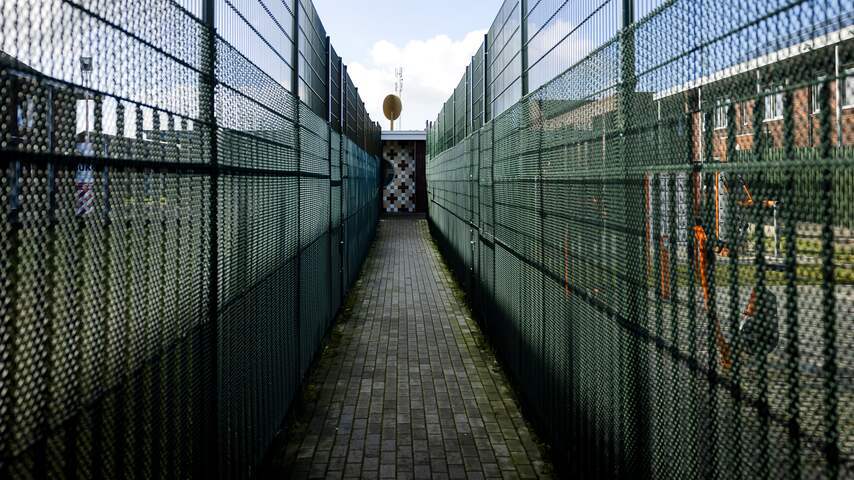
The court struck it down last year, but on Sunday it will reopen: a special location in Ter Apel for nuisance-causing asylum seekers. Why is this necessary, and how can this location now be reopened?
What is it actually?
The special location for nuisance-causing asylum seekers is called a process availability location (pbl). It is initially a trial to see if such a special location can reduce the nuisance.
From Sunday, the pbl in Ter Apel can accommodate asylum seekers who have little chance of an asylum permit (because they come from a safe country, for example) and cause nuisance.
Not all these people go directly to the pbl. The pbl is part of a step-by-step plan. Only if a nuisance-causer does not comply with previously imposed conditions or causes serious nuisance does the pbl come into view.
The asylum seekers must then stay in and around that pbl. It is then no longer possible to go to the center of Ter Apel. Someone must also follow a compulsory day and evening program, which, for example, concerns the asylum procedure or the return process.
Why is the pbl necessary?
In Hoogeveen, there is already a special reception location for asylum seekers who have gone too far. But the municipality of Westerwolde and the politicians wanted a place at the asylum seekers center (azc) in Ter Apel for people who do cause nuisance, but not to the extent that they should be sent to Hoogeveen.
Ter Apel experiences a lot of nuisance from a small group of asylum seekers. This happens not only at the azc itself, but also in the village.
The nuisance is often caused by people who have little chance of a residence permit. The intention is also that they will go through the asylum procedure more quickly with this approach. In the article below, you can read more about the experienced nuisance in Ter Apel.
Why did the court strike down the approach?
The previous cabinet already started a similar trial in Ter Apel in the summer of 2023, which was also called pbl. This involved a slightly different approach than the pbl now. The goal was the same: to put nuisance-causing asylum seekers in a special place and guide them through the asylum process extra quickly.
But the court struck that down in 2024. The government had to have a good reason to put someone in that ‘old’ pbl, and that was not properly put on paper. At that time, someone had to stay in the pbl for 22 hours a day. That restriction of freedom was too great, the judge said.
Therefore, the plan went back to the drawing board. The then cabinet came up with a new approach. The nuisance-causer had to register twice a day in the pbl and follow a daily program.
To be able to reopen that pbl, it had to be quiet enough in Ter Apel. After all, the application center was far too full for a long time. There was no room for a pbl until this year.
Why can the pbl now be reopened?
The desire remained to reopen the pbl. In the meantime, it is also much quieter in Ter Apel again, and the pbl can be reopened.
The difference with the old approach is that asylum seekers no longer have to be in one place for 22 hours a day, but can move freely within those designated areas. Also, someone who causes nuisance is not just put in a pbl, which used to be the case. Now there is a “sliding scale” via the step-by-step plan that asylum minister Marjolein Faber presented earlier this year in Ter Apel.
Initially, there are a total of eighty places in Ter Apel available for asylum seekers who are somewhere within that step-by-step plan. Five places are specifically reserved for the pbl. Ultimately, there should be more.
That step-by-step plan initially stated that the pbl would not be used immediately, because the cabinet still had to investigate how that was allowed. But, as the House of Representatives told Faber, the ‘new’ pbl would simply be legally permissible. The minister later came to that realization as well, and so the reopening date of June 1 appeared in the agenda.
Will this help?
It was questionable whether the pbl could really be opened on June 1. At the beginning of May, sources told de Volkskrant that this seemed unlikely.
But according to a spokesperson for Faber, the framework is now in place, which means that in principle, Sunday can be started. Then, a meeting will take place on Friday with the parties involved to share the first findings.
Whether the pbl will really work remains to be seen in the trial. There will certainly be bottlenecks. The Central Agency for the Reception of Asylum Seekers (COA), for example, was concerned about enforcement and safety. The organization stated on Friday that it would “closely monitor the situation in these areas.”